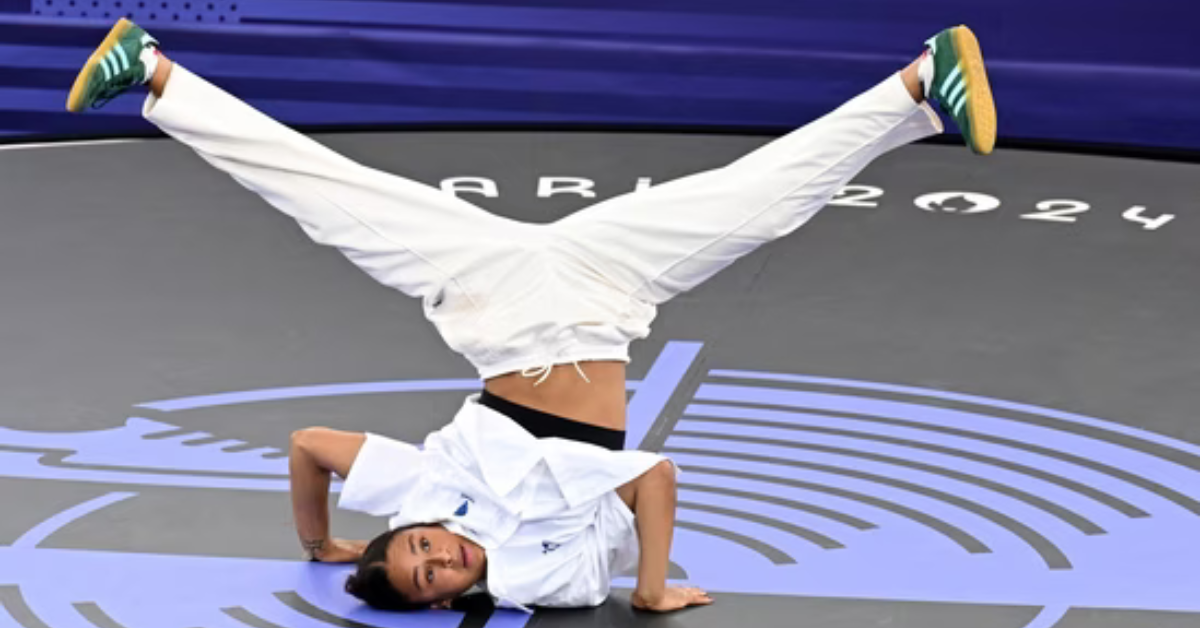The Paris Olympics 2024 witnessed a historic moment as breaking, also known as breakdancing, made its much-anticipated debut on the Olympic stage. Transforming the iconic Place de la Concorde into a vibrant urban sports arena, the event was not just a competition but a celebration of hip-hop culture, showcasing the blend of athleticism, artistry, and spontaneity that defines breaking. In a thrilling finale, Japan’s Ami emerged as the first-ever Olympic gold medalist in breaking, etching her name in the annals of sports history.
A New Chapter for the Olympics: The Debut of Breaking
The Evolution of Breaking
Breaking, a dance form that originated in the 1970s in the streets of New York City, has long been a symbol of youth culture, creativity, and resistance. Rooted in hip-hop culture, breaking combines intricate footwork, gravity-defying acrobatics, and rhythmic movements that express individuality and innovation. Over the decades, breaking has evolved from a street performance to a competitive sport, with global championships and a dedicated community of dancers, known as B-boys and B-girls.
The inclusion of breaking in the Paris Olympics was a strategic move by the International Olympic Committee (IOC) to appeal to a younger audience and infuse the Games with contemporary culture. Breaking’s Olympic debut marks a significant milestone, not just for the dancers but for the broader recognition of urban sports as legitimate and respected athletic disciplines.
A Unique Olympic Venue
The choice of Place de la Concorde, one of Paris’s most historic and picturesque squares, as the venue for breaking was symbolic. The square, which has witnessed countless historical events, was transformed into a modern-day arena where tradition met innovation. The temporary setup featured a large circular dance floor, surrounded by spectators who brought the energy and atmosphere of the streets into the heart of the city.
The setting was perfect for breaking, a sport that thrives on crowd interaction and the raw energy of live performances. As the dancers took to the floor, the historic surroundings provided a stark contrast to the modern, urban art form being showcased, creating a visually stunning and culturally rich experience for both participants and viewers.
The Road to Gold: Ami’s Remarkable Journey
Japan’s Breaking Sensation
Ami, a B-girl from Japan, has been a rising star in the breaking scene for years, known for her precision, style, and expressive movements. Her journey to Olympic gold was nothing short of spectacular. From the preliminary rounds to the final battle, Ami displayed a level of skill and creativity that set her apart from her competitors. Her routines were a perfect blend of technical difficulty and artistic expression, capturing the judges’ attention and the audience’s admiration.
Ami’s performance in the final was a masterclass in breaking. She executed complex moves with grace and power, seamlessly transitioning between explosive power moves and intricate footwork. Her ability to connect with the music and convey emotion through her dance resonated with the judges, earning her high scores in both technical execution and artistic impression.
A Historic Victory
Winning the first-ever Olympic gold in breaking is a historic achievement for Ami and a proud moment for Japan. Her victory is a testament to years of hard work, dedication, and passion for the art form. Ami’s gold medal is not just a personal triumph but also a significant milestone for the breaking community, demonstrating that the sport has arrived on the world’s biggest stage.
The victory also highlights the global nature of breaking, a dance form that, while rooted in American hip-hop culture, has been embraced and adapted by communities worldwide. Ami’s success at the Paris Olympics is a reminder that breaking transcends borders, bringing together dancers from different cultures and backgrounds to celebrate their shared love for the art.
Silver for Lithuania’s Nicka and Bronze for China’s 671
Lithuania’s Rising Star: Nicka
Lithuania’s Nicka claimed the silver medal in the breaking competition, showcasing her incredible talent and determination. Nicka, known for her dynamic style and fierce competitiveness, delivered a series of powerful performances that kept her in contention for the top spot throughout the event. Her ability to combine athleticism with creative expression made her a formidable opponent in the battle rounds.
Nicka’s journey to the silver medal was marked by intense battles, where she faced off against some of the best B-girls in the world. Her resilience and unwavering focus allowed her to navigate the pressures of the competition, ultimately securing a well-deserved place on the podium. Nicka’s silver medal is a significant achievement for Lithuania, a country with a growing presence in the breaking scene.
China’s 671: A New Force in Breaking
China’s 671, who took home the bronze medal, was another standout performer in the competition. With a style that blends traditional Chinese dance elements with contemporary breaking techniques, 671 brought a unique flair to the event. Her performances were characterized by fluidity, control, and a deep connection to the music, making her a crowd favorite.
671’s success at the Paris Olympics is a reflection of the rapid growth of breaking in China, where the dance form has gained popularity in recent years. Her bronze medal is a proud moment for China and a sign that the country is becoming a major force in the global breaking community. As breaking continues to evolve, dancers like 671 are pushing the boundaries of the art form, bringing new perspectives and innovations to the stage.
The Competition: A Celebration of Skill and Creativity
Intense Battles and Spontaneous Routines
The breaking competition at the Paris Olympics was nothing short of exhilarating, featuring intense battles between some of the best B-boys and B-girls from around the world. The event was structured around one-on-one battles, where dancers took turns showcasing their moves in a format that emphasized spontaneity and creativity. Each round was a test of not only technical skill but also the ability to read the music, adapt on the fly, and engage with the audience.
The judging system for breaking, which focuses on factors such as technique, originality, musicality, and crowd engagement, added to the excitement. Judges looked for dancers who could seamlessly blend complex moves with artistic expression, making each battle a showcase of both athletic prowess and creative storytelling.
The Spirit of Hip-Hop
While the competition was fierce, the event also embodied the collaborative and inclusive spirit of hip-hop culture. Breaking, at its core, is about self-expression and community, and this was evident throughout the Olympic event. Dancers from different backgrounds and styles came together to celebrate their shared love for the art form, creating an atmosphere of mutual respect and admiration.
The presence of hip-hop icons, including rapper Snoop Dogg, who made a special appearance at the event, further underscored the deep connection between breaking and the broader hip-hop movement. The Paris Olympics breaking event was not just a competition but a cultural celebration, highlighting the influence of hip-hop on global youth culture and its enduring relevance in the modern world.
Breaking’s Olympic Journey: From New York Streets to Paris Spotlight
A New Era for the Olympics
The inclusion of breaking in the Paris Olympics represents a new era for the Games, where traditional sports are being complemented by contemporary, youth-oriented disciplines. This shift reflects the IOC’s efforts to stay relevant in a rapidly changing world, where younger audiences are seeking sports that resonate with their interests and lifestyles.
Breaking’s journey from the streets of New York to the Olympic spotlight is a story of resilience, creativity, and cultural exchange. It is a reminder that sports are not just about physical competition but also about cultural expression and community building. The success of breaking at the Paris Olympics is likely to pave the way for other urban sports to be included in future Games, further diversifying the Olympic program.
Looking Ahead: The Future of Breaking
As breaking makes its mark on the Olympic stage, the future of the sport looks bright. The exposure and recognition gained from the Paris Olympics will undoubtedly inspire a new generation of dancers to take up breaking and push the boundaries of the art form. With its unique blend of athleticism, creativity, and cultural significance, breaking is poised to become a mainstay in the world of competitive sports.
The success of dancers like Ami, Nicka, and 671 at the Paris Olympics is a testament to the global appeal of breaking and its potential to unite people across cultures. As the sport continues to evolve, the breaking community will play a crucial role in shaping its future, ensuring that it remains true to its roots while embracing new possibilities.
A Historic Debut for Breaking at the Paris Olympics
The debut of breaking at the Paris Olympics 2024 was a resounding success, bringing a fresh and dynamic energy to the Games. Japan’s Ami, Lithuania’s Nicka, and China’s 671 made history with their outstanding performances, showcasing the incredible skill, creativity, and spirit that define breaking. The event was not just a competition but a celebration of hip-hop culture, highlighting the deep connections between art, sport, and community.
As breaking continues to grow and evolve, its inclusion in the Olympics marks a significant step forward for the sport and for the broader recognition of urban arts. The Paris Olympics 2024 will be remembered as the moment when breaking took its place on the world stage, captivating audiences and inspiring the next generation of dancers.
Please check for information on the best betting sites in India – https://selectory.org/best-betting-sites/















